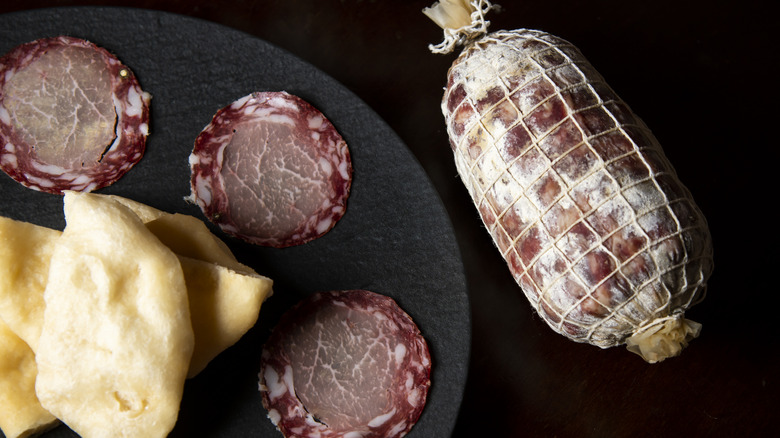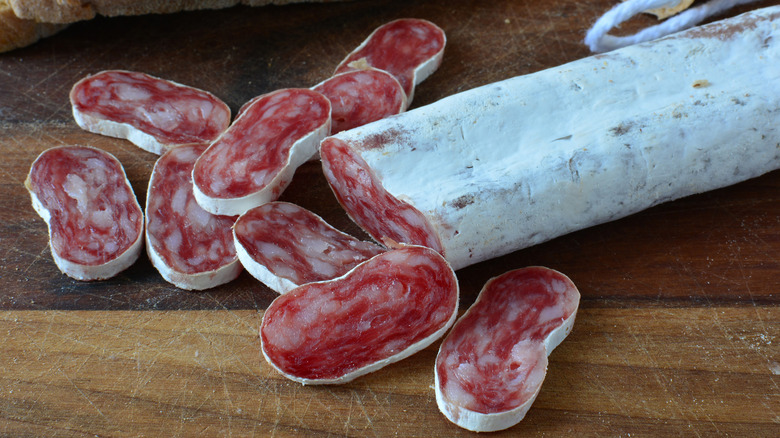The Unexpected Meat You Can Still Eat After It Gets Moldy
There is more than meets the eye when it comes to mold — literally. Those fuzzy splotches of green, gray, or white you see overtaking that half-eaten loaf of bread you forgot about in the back of the pantry can penetrate deep beneath the food's surface, reports the U.S. Department of Agriculture (USDA). While not all mold poses a risk to human health, some types of molds can produce illness-causing toxins. Others can prompt allergic reactions or lead to breathing issues. For this reason, many of us have been told that any and all foods should be thrown out at the first sight of mold. While this isn't a bad guideline to follow, there may be some exceptions to the rule.
The presence of mold on food doesn't always signal danger. Rather, mold is a key ingredient in certain beloved food items like Brie or Gorgonzola blue cheese. When it comes to meat, however, mold is generally not a good sign.
Hard salami and dry-cured country hams get a pass
Meats containing high levels of moisture — such as bacon, hot dogs, and lunch meats — run the risk of bacterial contamination once they start to mold and should therefore always be discarded, cautions the USDA. The same is true for leftovers. Any cooked meat or poultry that has been stored in the fridge and started to mold should then be thrown out.
The exception to the rule lies in hard salami and dry-cured country hams. White surface mold can be found on different kinds of Eastern European, Italian, and San Francisco salamis. There is no harm in ingesting these products, so long as there are no other types of mold present. Surface mold is also considered standard for dry-cured country hams. Because hard salamis and dry-cured country hams are both shelf-stable products, surface mold is not unusual. While still safe to eat, it is advised to scrub away the mold prior to cooking.
How mold helps protect these cured meats
The white mold found on the outer layer of hard salamis and dry-cured country hams actually serves an important purpose. "This is not there by accident—it's a part of the manufacturing process," nutritionist Lisa Richards told Reader's Digest. "This benign mold is added to the outside of the [meat] for two reasons. It helps to cure it, and it provides a protective coating to keep the salami safe from bacteria." Not only that, but culinary experts at the Denver-based, award-winning deli and salumeria, il porcellino salumi, explain that the mold coating can offer salami fans an additional distinct flavor.
While these hard, cured meats may get a pass when it comes to mold growth, we know this is not the case for all meats. Therefore, if you notice the development of mold on any other meats, poultry, or alternate food items, wrap it up in plastic or paper and dispose of it in the garbage (via USDA). Inspect neighboring items to ensure they haven't also been contaminated and sanitize the area where the moldy item was found. Above all, refrain from sniffing any moldy foods, as mold inhalation can cause breathing problems.



